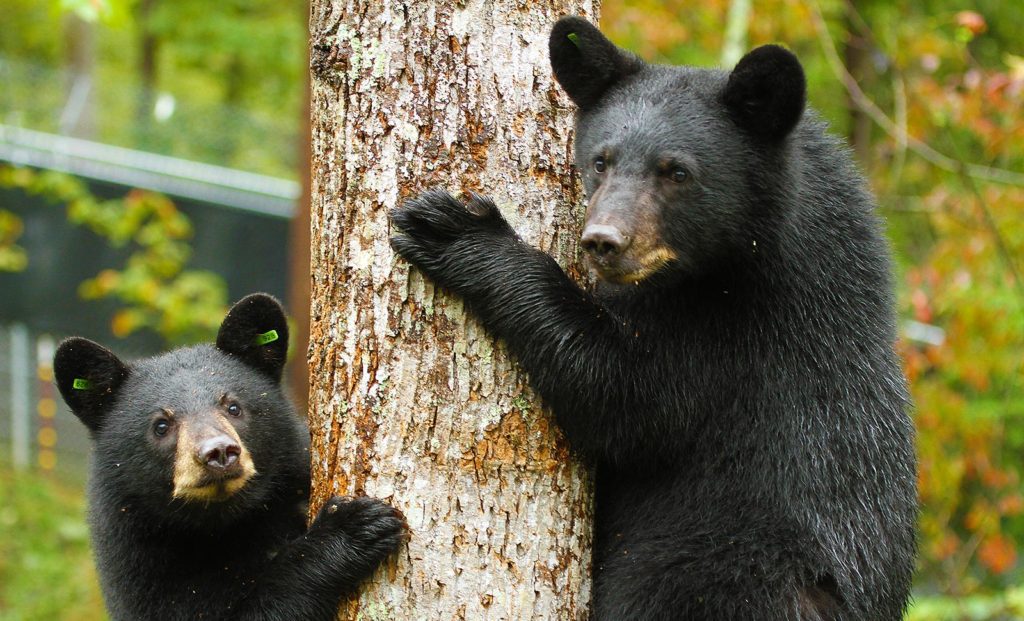
Seeing wildlife when we are out and about on our family adventures is, in my opinion, the best part about getting out into nature. For many people, the idea of running into wildlife in the woods can be daunting, if not downright scary. Yes, animal encounters in the wild can turn dangerous, especially if you don’t know what to do. Here is everything you need to know about how to handle wildlife encounters.
Please note: some posts may contain affiliate links which means we could earn a small commission if you purchase products from our site at no additional cost to you.
New York State is home to many different animals, everything from black bears, moose, foxes, bobcats, beavers, raccoons, and otters. Most animals will do their utmost to keep their distance from humans. Yet, occasionally their path will cross ours, and when this happens, the fur can fly.
What To Do
- Remain calm
- Don’t run…food runs.
- Make a lot of noise, speak loudly
- Stand your ground
- Back away calmly
- Give the animal an escape route
Bears
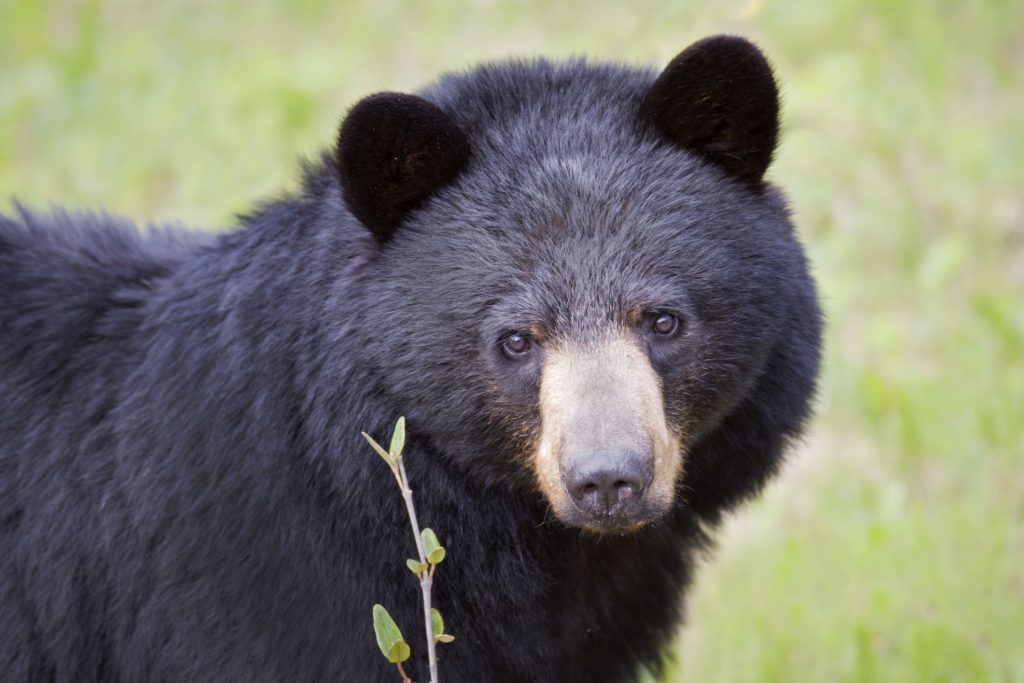
Black bears are beautiful animals. If you are lucky enough to see a mother and her babies, it’s a pretty magic moment. Most people think that encountering a mother with babies with result in a bear attack. I can tell you from personal experience that this isn’t true. It is all in how you handle the encounter that matters. Bears, like all animals, do not want to confront humans. I know this goes without saying, never feed a bear or leave food out for them. A fed bear is a dead bear.
Our Personal Experience: We were hiking one day and came upon a mama bear and her two cubs. At the time, my husband and I were chatting with each other. When we went around the bend, the mama bear stood up and stuck her head up and above the bush she was hiding behind, as she had heard us coming. My husband saw the bear right away and threw his arm out in front of me to stop me. We remained calm and waited as the bear hurried her cubs off into the woods. At that point, we decided to turn around and go back the way we came so that we wouldn’t accidentally run into her again.
Take Precautions
Make Noise
If you are hiking in an area known for bears, the single most important thing you can do is make noise as you hike. Bears have good hearing and will hear you approaching if you are talking or making noise. This is better than turning a corner and finding yourself face to face with them, startled.
Carry Bear Spray
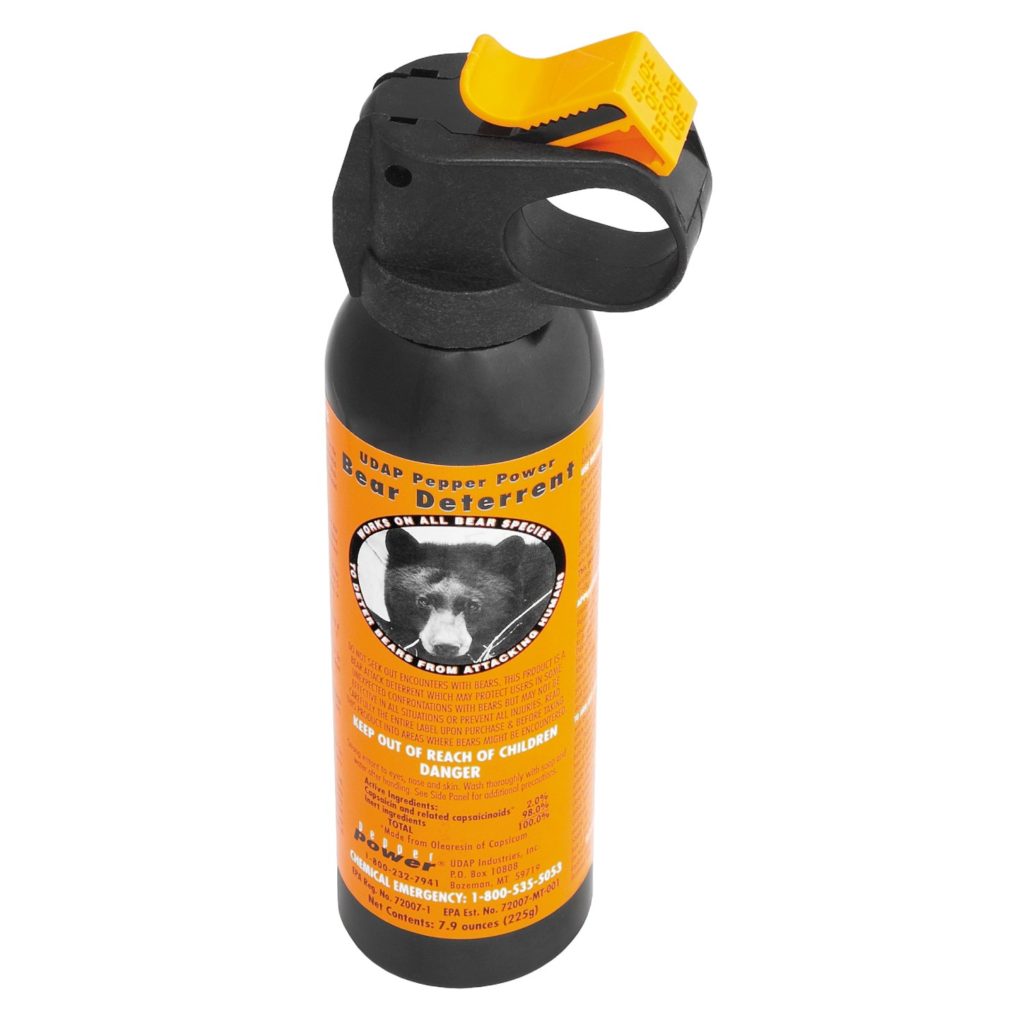
Some people like to carry bear spray. I have mixed feelings about this. Bear spray is much like mace. You need to know how to use the spray in order to use it correctly. You can very well incapacitate yourself when you attempt to wield it.
Keep your food in Proper Storage.

When camping, if you are in bear country, keep your food in proper storage containers, such as bear-resistant containers. Never store your food inside your tent. Keep your site clean, all garbage closed up and put away in your vehicle, or disposed of in the dumpsters provided at the campground. Make sure to clean up all your cookware. Never throw food into your fire, as bears have a great sense of smell and will come looking for the source of the great smell.
Encountering a Bear
If you should come face to face with a bear, remain calm. Absolutely do not approach, corner, or antagonize the bear. Do not run. When you run, you become prey. Stand your ground by pulling yourself up to your full height and making noise. If you are camping, bang pots and pans together.
If the Bear Approaches You
If a bear feels threatened, endangered, or even in some cases, curious. They might pursue interaction with you.
If a Bear Approaches you:
- Raise your arms and speak loudly with a calm voice and back away.
Charges you:
- Stand your ground.
- If you have bear spray, spray it at the bear.
Follows you:
- Stay together.
- Do not run, but continue to back away while speaking loudly.
- If the bear continues to follow you:
- Stand your ground.
- Attempt to intimidate the bear by making yourself look bigger.
- Wave your arms, clap, shout or bang sticks.
- Prepare to fight or use bear spray.
- If the bear makes contact with you:
- Fight back with anything at hand (knife, stick, rocks, fists).
Raccoons
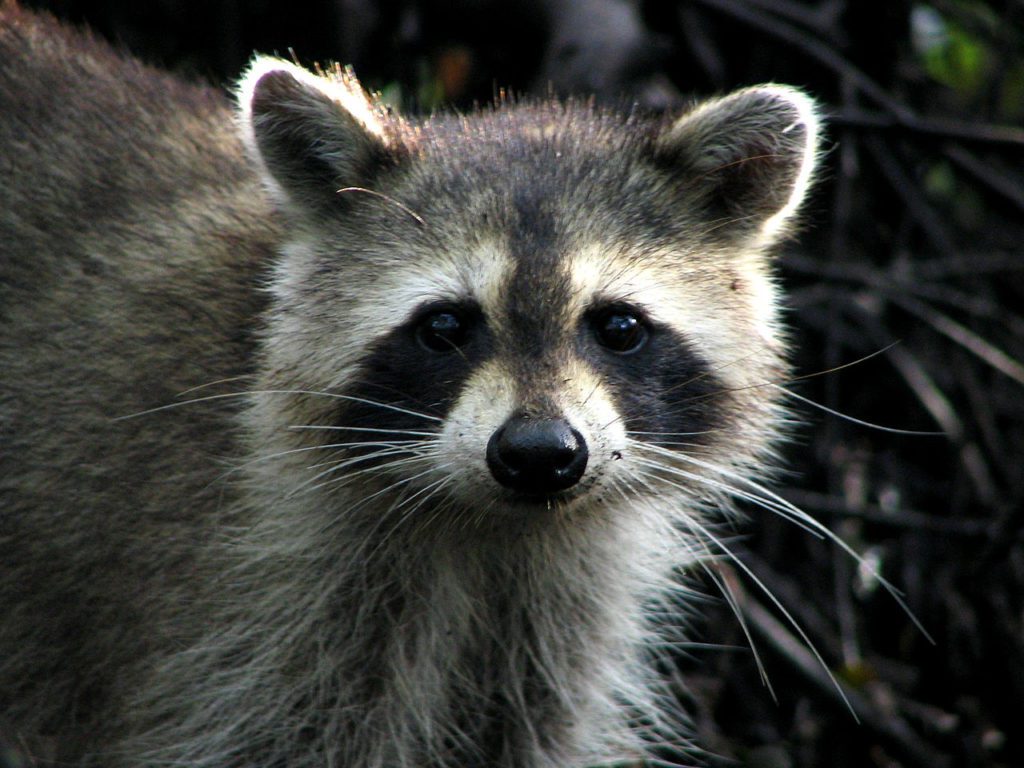
When camping, raccoons are almost always an animal that is frequently encountered. They are a staple at most campgrounds because humans provide them with an easy source of food. These cute little devils aren’t as shy as you might imagine. They are many times quite bold and will often approach your campsite long before you head to bed. Not to mention they are quick.
Our Personal Experience: While camping in Letchworth State Park, we encountered a rascally little marshmallow thief just after sunset. We had five people on our campsite, and we were less than 3 feet from the picnic table where the marshmallows were (as we were preparing to make s’mores.) This raccoon walked up like he owned the place. Not even fazed about how close we were to him and his conquest. He climbed up on the picnic table, watching us, watching him, and casually slid the bag of marshmallows off the table. He jumped down and snatched up the bag, and took off like lightning. My husband ran after him in pursuit of the brand-new bag of marshmallows, only to be met with a growl and a snarling flash of his nice sharp teeth. He decided his best course of action was to relinquish the marshmallows to the raccoon. The moral of this story…They don’t care if you are standing right there.
Take Precautions
Handle Food and Food Waste Appropriately
When you are camping, never leave food out and unattended. Make sure to keep everything in coolers and put it away when you aren’t using it. Do not leave trash around, and don’t throw uneaten food in the fire. Even if you think there are no more beans in that can, I guarantee that later that night, a raccoon will have its head fully emersed in the can, licking out the sauce.
Don’t leave out Pet Food.
Raccoons will be just as happy to eat your dog’s food as they will your own. Make sure to put all dog food, dog treats, and such away.
Do Not Feed Them
I get it, raccoons are adorable. However, like all wildlife, under no circumstances should you feed them. Not only is this putting you in danger and quite possibly on the receiving end of a nasty bite, but this is not good for the animal. Any animal. Animals need to find their own natural sources of food. Fed animals become nuisance animals that will, unfortunately, need to be dealt with by park rangers. If you care about wildlife, don’t feed anything, no matter how cute or hungry it looks. Their life may depend upon it.
Skunks
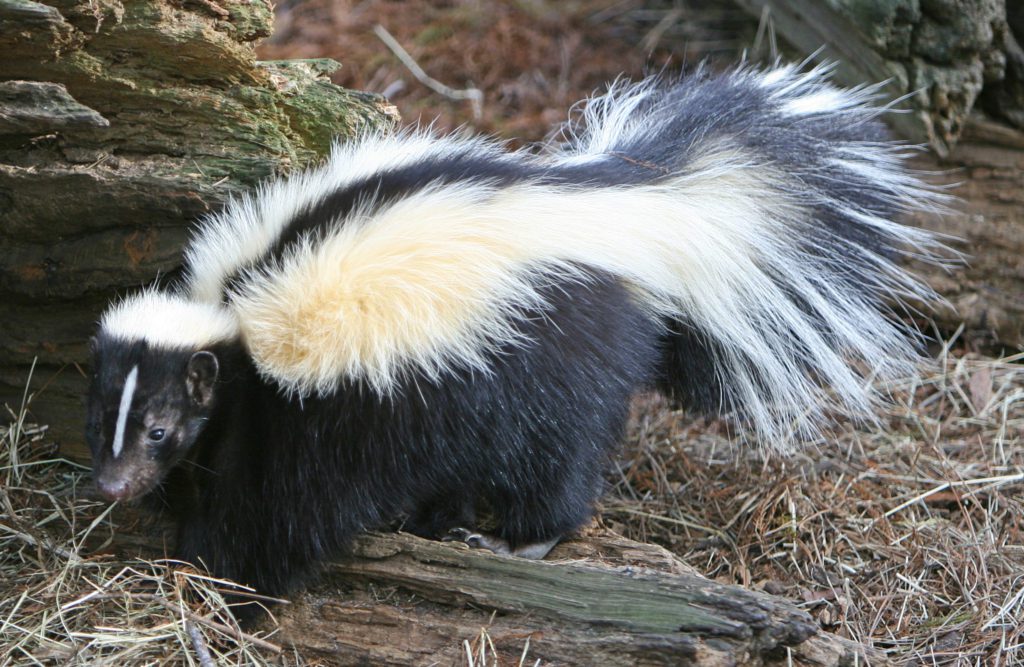
If a skunk is in the vicinity, there is no way you won’t know it. Their funky smell carries and is as effective a deterrent as anything going. People don’t need any warning to stay away from skunks. It is our, and every other creature’s, natural instinct. However, skunks can be quite curious, and they are often found scavenging around campgrounds. I have personally seen skunks be very friendly and relatively tame.
Our Personal Experience: WARNING – DO NOT TRY THIS!!! Back many, many moons ago when I was a child. I remember camping with my parents at Sampson State Park. I was inside our camping getting ready for bed, and my dad was reading by lantern at the picnic table, just outside the camper door. He is about to get up and go to bed when he looks down at where he was about to step, and there is a skunk. The skunk looked expectantly up at him, expecting a treat. Of course, my dad obliged the little fellow and handed over a little of his snack. Once the skunks realized there were no more treats to be had, santered away in search of someone else’s treats. My dad has a very fond memory of this encounter, but as I said before, it could have gone drastically differently. I am strongly discouraging you from feeding these animals should they approach you.
Take Precautions
Skunks are bold animals. They know their power and aren’t quick to use it unless they feel threatened. However, you never know when your actions might appear threatening. Something you should be aware of is that Skunks are nearsighted. They can’t see very well at a distance. If they mistake you for a predator, they will not hesitate to spray you.
Properly Store Food and Food Waste
Like every other critter in the woods, skunks are up for a free handout and will come in search of food. Keep your food properly stored, do not burn your food waste, and dispose of your garbage properly. These are definitely not the nocturnal guest you want to stumble upon when you are making a midnight run to the bathroom.
What to do
If you should encounter a skunk in the woods, stop where you are and slowly back away. Do not make them feel trapped. If startled, skunks will give you a slight warning if you know what to look for. It will hiss at you, stomp its feet and turn its backside toward you. Skunks are very accurate sprayers and can reach a distance of 10 feet. If you notice them exhibiting this behavior…RUN!!! Do not stand there, you will get dosed!
Moose

This big fella is my wild animal unicorn. I have never had the opportunity to see one in the wild, and I am very much longing to, from a safe distance, obviously. Like most people, I have seen the YouTube videos where a scared and frustrated moose, gives some unfortunate human, who found themselves in the wrong place at the wrong time, the business end of its hoof. Not pretty. So what do you do when you encounter Bullwinkle in the wild? Give him space. Lots and lots of space.
Take Precautions
Observe From A Safe Distance
Stay at a safe distance. This is probably the most important point. Moose may look like adorable overgrown weird deer, but they are big enough to seriously hurt you, and hurt you they will if they feel threatened. You need to make sure that when you see a moose, you have enough time to move out of the way and hide should they decide to charge you.
Watch For A Change In Behavior
Moose will exhibit warning signs that they are agitated, such as the hair on the back of their neck and hips might standing up, they might flatten their ears, tossing their heads up and down, urinating on their back legs, or smacking their lips. If you see this behavior, quickly back away.
If A Moose Charges
If a moose charges, DO NOT stand your ground…RUN! They are trying to chase you off. You will want to put something large, like a tree, between you and the moose. They will likely stop chasing you once you put enough distance between you.
Snakes

There are only three venomous snakes in New York State, copperheads, timber rattlesnakes, and eastern massasauga rattlesnakes. Your chances of running into one of these are extremely low. 2 out of the three snakes have a warning system, their rattle, which they will shake to alert you to their presence.
Take Precautions
Encounters with snakes are usually accidental. Lifting up a log or walking through a fallen leave. as they are shy creatures. Sometimes, people find them sunning themselves, but in most cases, they aren’t just hanging out in the open.
Watch You Put Your Hands
Snakes will hide in rock crevices, under logs, in holes, and under leaves. It is important to be conscious of your surrounding and not stick your hands in places that you can’t see, such as down a hole. If you hear the rattle of a rattlesnake, carefully scan the vicinity, and move away from the snake and give it a chance to escape.
If You Are Bitten
If you should be bitten, remaining calm is essential. You want to keep your heart rate down. Try to identify the kind of snake that bit you. If you’re hiking, make your way back to the trailhead and seek assistance by calling 911. Do not elevate the bite area.
Rabies
One of the great fears of hikers and outdoor enthusiasts alike is encountering a rabid animal. While this is highly unusual and, in fact, quite rare, it is still a fear that sits in the back of our minds. There has only been one documented case of a human contracting rabies in New York State and only two recorded deaths in the United States.
Recognizing Rabies
The most important symptom of rabies is an animal acting unusually. Such as a nocturnal animal appearing in the daytime or an animal acting confused. Rabies is a neurologic disease, and therefore, most symptoms will be neurologic such as staggering, aggressive behavior, drooling seizures, and animals who are not easily scared off. (FYI – Some animals, such as raccoons and foxes during baby season, are often seen during daytime hours because they are searching for food.)
What To Do
If you suspect an animal is rabid, get away from the animal and contact a park ranger or call 911. If you are attacked by an animal, seek treatment immediately. Early intervention is the key to dealing with rabies.
Enjoy the Outdoors
Many people are afraid of encountering wildlife in nature. As long as you use common sense and keep your wits about you, there is no reason seeing wild animals in their natural habitat can’t be an enjoyable and exciting event.